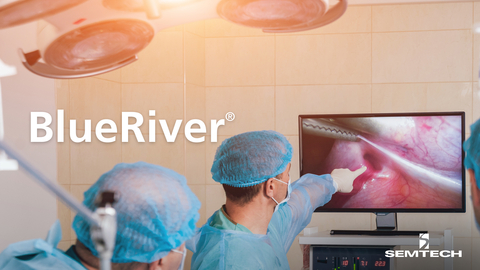
CAMARILLO, Calif.– Semtech Corporation, a leading global supplier of high performance analog and mixed-signal semiconductors and advanced algorithms, announced that JAM-Labs, a Silicon-Valley-based medical devices company focused on building next generation of operating room integration products and transforming healthcare for its customers, has integrated Semtech’s BlueRiver® platform into its latest generation of surgical displays. Through implementing BlueRiver, JAM-Labs surgical displays provide uncompressed, near-zero latency 4K video that is compatible with any Software Defined Video over Ethernet (SDVoE)™ equipment.
“Hand-eye coordination is crucial to surgeons. Any latency on a surgical display can impact this, and for extended periods, could lead to surgeon fatigue,” said John Thomas, CEO, CTO and co-founder of JAM-Labs. “The integration of Semtech’s BlueRiver device into our latest surgical displays, enables us to maintain near-zero latency, uncompressed video quality as well as sterile by eliminating external convertor boxes for a cleaner operating room solution.”
Ideal for operating rooms, JAM-Labs’ surgical displays are providing near-zero latency, 4K video for surgeons through Semtech’s BlueRiver platform. In addition, by featuring BlueRiver technology, the core of interoperable SDVoE products, the JAM-Labs surgical displays are now able to support other SDVoE equipment relevant to the operating space.
“Transmitting high quality 4K video with near-zero latency over networks is ushering in a new era of healthcare,” said Don Shaver, vice president of marketing of video products for Semtech’s Signal Integrity Products Group. “Semtech’s collaboration for JAM-Labs’ surgical displays is showcasing the effectiveness of the BlueRiver platform as well as SDVoE technology to provide better experiences for both the patient and healthcare professional.”

